简体中文
繁體中文
English
Pусский
日本語
ภาษาไทย
Tiếng Việt
Bahasa Indonesia
Español
हिन्दी
Filippiiniläinen
Français
Deutsch
Português
Türkçe
한국어
العربية
Key Points to Know Before Investing in Buffered ETFs
Abstract:Learn the essential details about Buffered ETFs, a strategic tool offering market downside protection with upside potential in today's volatile financial landscape.
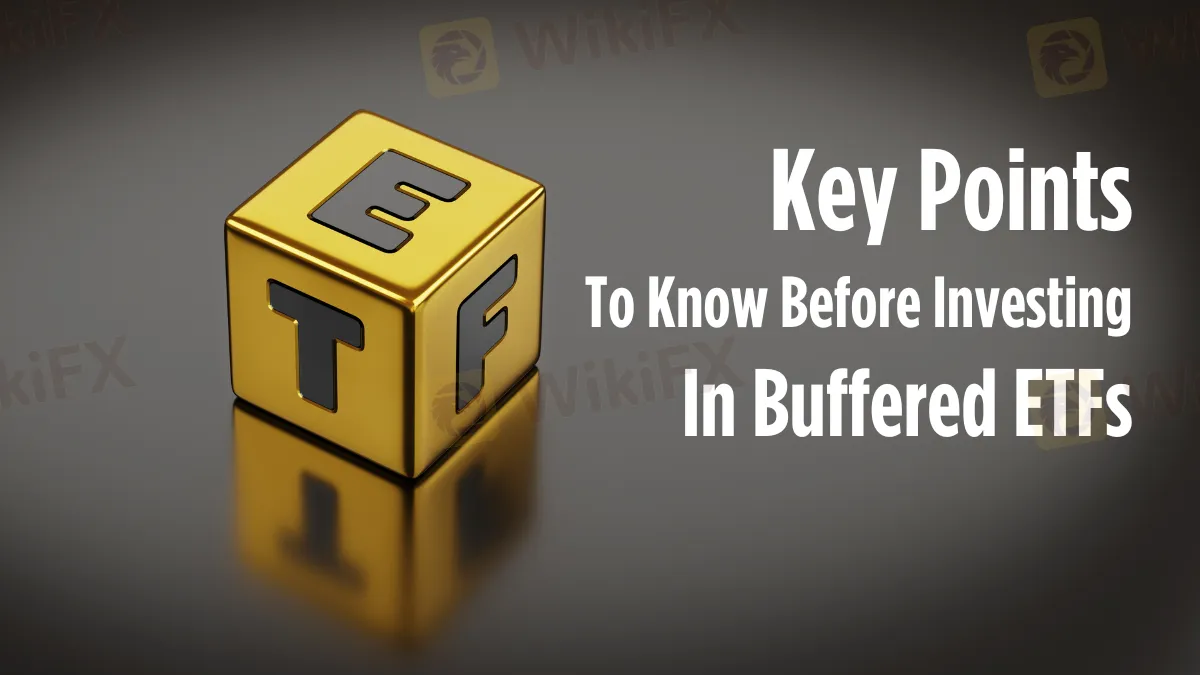
In today‘s rapidly shifting financial environment, market volatility concerns many investors. One solution gaining traction is Buffered ETFs (Exchange-Traded Funds). These investment vehicles offer downside protection while still allowing participation in market gains, making them an increasingly popular option for those seeking to hedge against potential losses. Here’s what you need to know before investing in Buffered ETFs.
What Are Buffered ETFs?
Buffered ETFs are exchange-traded funds that incorporate a protective buffer against market declines. In simple terms, they allow investors to limit their losses when the market drops while still giving them an opportunity to participate in gains. This balance between protection and growth appeals to those looking for more security in their investments without entirely forgoing market exposure.
The concept behind Buffered ETFs is to provide a pre-set level of protection on the downside, often through options contracts, while capping potential gains on the upside. For example, one of the popular Buffered ETFs from Innovator ETFs, under the ticker PAUG, offers 15% downside protection, meaning that the first 15% of losses are buffered. At the same time, investors can still benefit from a 12.8% upside.
Why Consider Buffered ETFs?
For many investors, the appeal of Buffered ETFs lies in their ability to manage risk in an unpredictable market. Bruce Bond, CEO of Innovator ETFs, highlights this unique feature, noting that Buffered ETFs fit well for investors seeking market exposure without taking on the full risks associated with it. With monthly issues of new Buffered ETFs, investors can align their investments with specific market conditions.
Bond recommends holding onto these ETFs for the entire year as they are built around one-year options. “At the end of the year, the options are fully valued, and then we reset it for the following year,” Bond explains. This reset provides investors with a structured timeline for their investments, allowing them to manage their expectations and plan accordingly.
Skepticism Around Buffered ETFs
Despite their growing popularity, only some are convinced that Buffered ETFs are the best solution. Mark Higgins, Senior Vice President of Index Fund Advisors, expresses caution over these strategies. He argues that some investors might be creating expensive solutions for what could be a simpler problem – dealing with market volatility.
Higgins believes there are more cost-effective ways to navigate uncertainty, such as staying disciplined with long-term investment strategies and consulting with a financial advisor rather than making drastic moves out of fear. According to Higgins, advisors who maintain a calm approach can help investors manage their emotions during turbulent times without the need for complex strategies like Buffered ETFs.
Why Are Buffered ETFs Growing in Popularity?
Buffered ETFs have seen a remarkable surge in interest recently. As of the latest figures, these funds have accumulated around $45 billion in assets under management, with much of that growth occurring in the past year. Several factors contribute to the rise of Buffered ETFs, including market volatility, interest rates, and implied dividends.
- Volatility: Market volatility, or the expectation of future price movements, plays a crucial role in the pricing of Buffered ETFs. When volatility is high, the upside cap (the limit on potential gains) tends to increase, offering investors a more attractive opportunity for growth.
- Interest Rates: Changes in interest rates also influence the pricing and performance of these funds. Higher interest rates generally mean higher premiums from selling call options, which translates to a higher upside cap. Conversely, as interest rates rise, the cost-effectiveness of the downside protection increases.
- Implied Dividends: The dividends factored into the pricing of the underlying assets affect the performance of Buffered ETFs. By considering implied dividends, these strategies often provide more tax-efficient returns than traditional dividend-paying stocks.

The Mechanics Behind Buffered ETFs
Buffered ETFs achieve their protective features through a series of options contracts. These contracts are carefully structured to create a buffer against losses while limiting gains. The process often involves a combination of buying and selling options that set both the downside protection and the upside cap.
This complex arrangement allows investors to customize their risk exposure based on their financial goals. Some investors prefer short-term protection, while others might be looking for long-term growth with a safety net in place. The flexibility offered by Buffered ETFs makes them a versatile tool for different market conditions.
The Role of Buffered ETFs in Risk Management
Buffered ETFs are increasingly becoming a part of diversified portfolios, especially in times of market uncertainty. In inflationary environments, where both stocks and bonds can experience declines, these ETFs provide a way to manage risk without abandoning growth opportunities altogether. They allow investors to stay in the market, mitigating the fear of missing out on gains while protecting against significant losses.
In addition to offering downside protection, Buffered ETFs help investors safeguard their existing gains. As equity markets reach all-time highs, many are concerned about potential downturns. Buffered strategies reduce a portfolios exposure to market swings or equity beta while still enabling participation in future growth.
Are Buffered ETFs Right for You?
Investing in Buffered ETFs is not a one-size-fits-all solution. These funds are best suited for investors who want to balance risk and reward. They provide a structured approach to managing downside risk while still allowing for some market participation, making them appealing in volatile markets.
However, its essential to consider the costs associated with Buffered ETFs. While they offer protection, the cap on potential gains means that investors might miss out on significant market rallies. Additionally, some experts argue that more straightforward strategies could be just as effective in managing risk without the added complexity and expense.
Final Thoughts
Buffered ETFs are a powerful tool for investors who seek protection against market declines while still wanting to benefit from upside potential. As market volatility continues to dominate the financial landscape, these ETFs offer a way to manage risk without stepping entirely away from growth opportunities.
Financial professionals can incorporate Buffered ETFs into investment plans by understanding the key factors that influence their pricing and performance. Whether you are a conservative investor looking for protection or someone trying to navigate today's complex markets, Buffered ETFs might offer a balanced approach to your investment strategy.
Before diving in, evaluating your financial goals, risk tolerance, and market outlook is crucial. Consulting with a financial advisor can help determine whether Buffered ETFs align with your investment strategy. As always, careful consideration and planning can go a long way in ensuring long-term success.
Related news:
Stay informed about Buffered ETFs and their role in managing market risk. Visit WikiFX News for the latest updates and insights on this and other financial strategies.

Disclaimer:
The views in this article only represent the author's personal views, and do not constitute investment advice on this platform. This platform does not guarantee the accuracy, completeness and timeliness of the information in the article, and will not be liable for any loss caused by the use of or reliance on the information in the article.
Read more
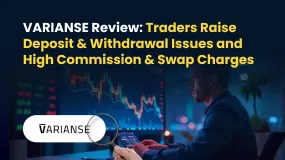
VARIANSE Review: Traders Raise Deposit & Withdrawal Issues and High Commission & Swap Charges
Are you losing both while depositing and withdrawing your capital at VARIANSE? Does the broker give the currency conversion rate excuse for this? Have you been trapped with spreads charged higher than promised? Do you bear steep commission and swap charges at this broker? Traders frequently report these trading issues online. In today’s VARIANSE broker review, we have shared some trading complaints that have grabbed everyone’s attention. Take a look.
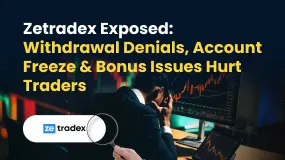
Zetradex Exposed: Withdrawal Denials, Account Freeze & Bonus Issues Hurt Traders
Do you constantly face withdrawal denials by Zetradex? Does the forex broker keep freezing your account and wiping out your capital? Have you also undergone issues concerning the Zetradex no deposit bonus? These trading issues have become apparent as the forex broker allegedly scams traders all over. In this Zetradex review article, we have demonstrated some complaints. Read them to get a feel of what happens to traders here.
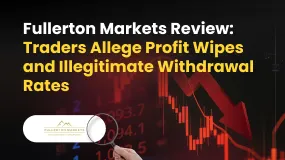
Fullerton Markets Review: Traders Allege Profit Wipes and Illegitimate Withdrawal Rates
Have you witnessed constant profit deletion from Fullerton Markets? Has the Saint Vincent and the Grenadines-based forex broker wiped out all your capital after you checked it on Fullerton Markets Login? Do you find the deposit and withdrawal rates abnormal here? These complaints have been grabbing everyone’s attention on Fullerton Markets Review Platforms. In this article, we have shared some of these complaints for you to look at and inspect. Read on!
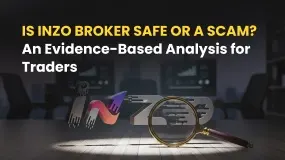
Is Inzo Broker Safe or a Scam? An Evidence-Based Analysis for Traders
When traders check out a new broker, the main question is always about safety and whether it's real. Is Inzo a trustworthy partner for your trading capital, or is it a scam you should stay away from? The broker looks modern and professional, offering popular platforms and many different account types. However, this polished look is clouded by many serious complaints from users who report big problems with their money and trading conditions. A simple "yes" or "no" answer isn't enough. To reach a good conclusion, we need a detailed investigation based on facts. This analysis will give you a clear and fair breakdown of the facts. We will cut through the mixed information to give you a complete picture of Inzo.
WikiFX Broker
Latest News
BASF CEO: EU CO₂ Trading Is A "Destruction Mechanism" For European Industry
PINAKINE Broker India Review 2025: A Complete Guide to Safety and Services
Is Inzo Broker Safe or a Scam? An Evidence-Based Analysis for Traders
Is Uniglobe Markets Legit? A 2025 Simple Guide to Its Safety, Services, and User Warnings
Is Forex Zone Trading Regulated and Licensed?
WikiEXPO Dubai 2025 “Welcome Party” Kicks Off Tonight!
He Trusted a WhatsApp Group and Lost RM659,000
Exness Restricted Countries List 2025 Explained
Zetradex Exposed: Withdrawal Denials, Account Freeze & Bonus Issues Hurt Traders
Is Fyntura a Regulated Broker? A Complete 2025 Broker Review
Currency Calculator




